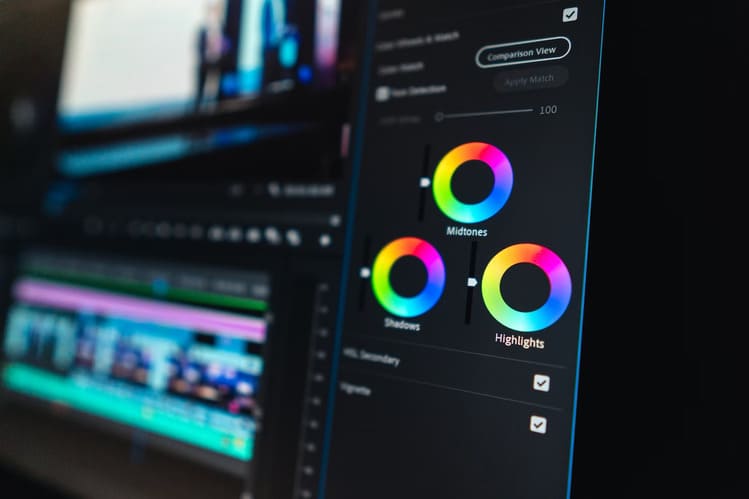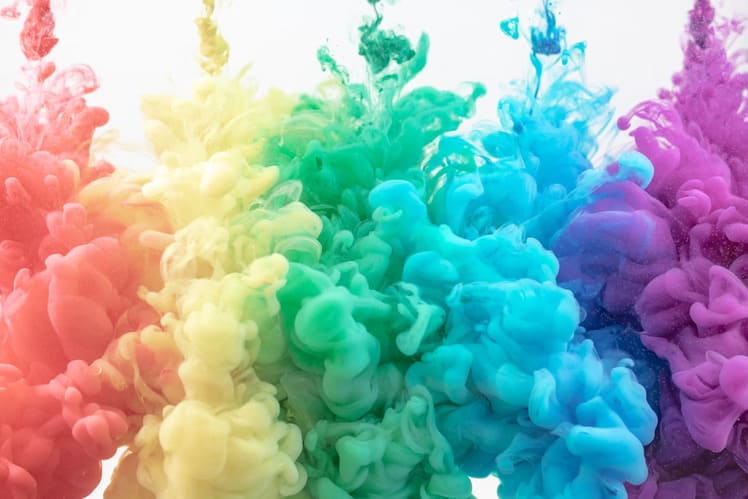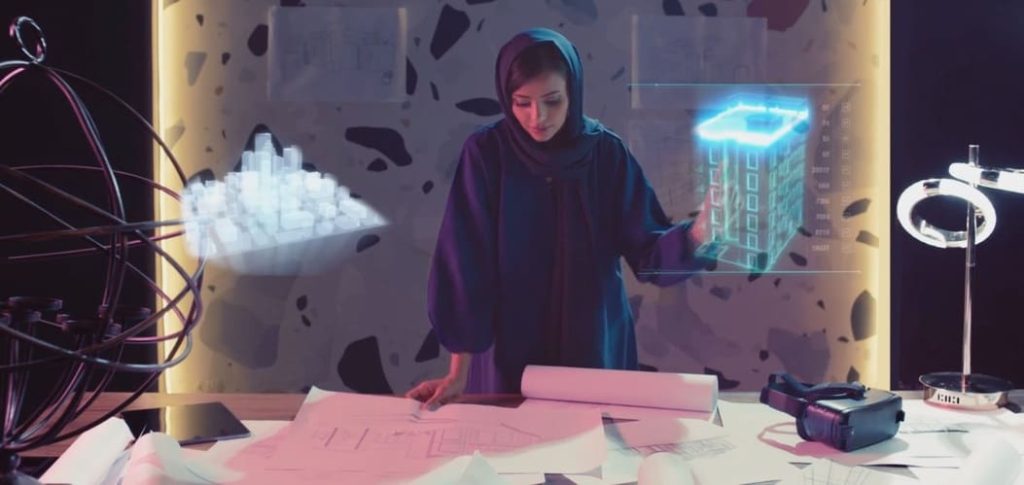How to Use Color Grading in Film – Color Grading Techniques

The more perceptive people out there might have noticed that colors play a huge part in film, and we’re not just talking about the obvious examples of the most colorful scenes, like those you might see in a kid’s film or an animated movie.
We’re talking about the way that color tinting and tones, the result of film color grading, make a huge difference to the atmosphere and feel of a film. For instance, in a film that becomes more sinister and adds a “cold” feeling to the film. The film director and staff that are working on the movie can use a process of film color grading allowing them to accentuate certain colors.
Color Grading Explained
So what is color grading in film? Before we dive into some film color grading examples, it helps to understand what the process is and how it works.
It is effectively a form of manipulating and altering the color tones used in the movie to suit a certain color palette. This helps to give a film its look. In a similar way to a painting, when painters use a certain palette of colors to create the aesthetic they want, a film should be viewed in exactly the same way.
Why do we do this? There are a few different reasons for film color grading:
- It helps to set the tone of the film. We’ve become accustomed to certain things with different genres, such as a much colder look for certain scary films. Color grading for horror films will often be dark and cold, compared to sunny comedy films with bright colors.
- It helps to provide consistency. Before the films go through color grading they also go through color correction, this is a method of ensuring a consistent look all through the film, so that one shot is not wildly different from the next.
- It gives more artistic control. Directors and cinematographers may have a certain idea of how they want the film to look. Color grading is a perfect tool for giving the director much more control.
Color Grading or Color Correcting?

These are two different terms that you will hear used regarding video editing. While color correcting is all about providing fixes, and bringing everything into the same sort of color palette, grading is a much more stylistic approach.
For instance, in color correction, the colorist on a film will analyze the different images and make them appear natural and correct, with the right level of lighting. If you were to watch a scene of a movie and it hadn’t been color corrected then there is a chance that things like skin color tones and white balance would all look different. This is a crucial part of post production and it is certainly essential when a lot of different cameras are being used and when there are other visual effects.
Color correction is one of the first steps in post production, especially important in film production as opposed to other forms of video and commercial video. Next, we move onto color grading.
This happens after the color correction process. The video will have been made to look uniform already, before there is an additional process to change the color palette and suit what has been planned for the film. This may have been discussed in pre-production.
This gives creative control over mood changes, too. For example, if you think of the way that the music in a film tells us that the mood of the film is changing, and may become more dramatic or tense to suit the feeling of what is happening. It is yet another creative tool and
How Color Grading is Done
Color grading is a relatively new technique. Now, film color grading software can be used to totally change the look and feel of a film, whereas previously it would have been a case of color timing. This was a sort of old film color grading technique, which used the negatives from the camera within a lab.
Software is used by the vast majority of modern colorists to create a color scheme and give the film a certain look. The directors and colorists use something called an LUT, which is a “lookup table” and this helps to keep everyone on the same page when it comes to the colors you require. Everyone can agree on this color scheme and the vibe and look it gives.
There is a shot matching process which is part of the color correcting process, rather than the process of color grading. It prevents there from being discrepancies between the different shots.
A big job of the color grading professional is also to ensure that skin tones are lined up perfectly. People are very sensitive when it comes to seeing differences in these tones, and this step is all about providing consistency and something that is true to reality.
Only when all of these steps have been considered and addressed, can you start to think about how color grading can actually change the film and the way it feels. For instance, using artistic tastes to create a certain look to your production. A lot of this comes down to intuition and artistic skill, some professionals have a reputation in the industry as being the best when it comes to color grading, or for grading in certain genres. If you are making the next big horror film then there are certain colorists that you might want to work with.
Color Temperature
One of the key concepts to understand in the world of color grading is the color temperature, that can change the whole feel of a film. A brighter color temperature can use a lot of orange and red colors, whereas the cooler tones tend to include a lot of blues.
If you have ever edited photographs, you may already be familiar with color temperature, and the fact that you can change the tint and temperature, either including more blue colors and palettes or more bright and warm colors. This is a huge part of photography as well as videography.
Examples of Color Grading

There are many wonderful examples of color grading, and how it can truly enhance the experience of a movie. It helps directors and cinematographers, as well as the colorists working on the film, to create the end result they are hoping for.

If you take a look at the Insight Studios portfolio you will see examples such as the JETOUR Cars Commercial. Take a quick look and you will see some of the colors used, with blues, purples, and metallic color palettes giving the feel of a futuristic and modern vehicle, exactly the right sort of image for this particular commercial. This shows that it is not all about creating a style for a fiction film, it is about creating an effective end-result. At the time of creating the concept for the film these are the kinds of things that should be discussed and understood.
There are many Hollywood films that are known for their color grading and use of LUTs. An LUT is the color grading reference, and if you watch a film such as Mad Max: Fury Road, you will see a very distinct color palette which includes bright yellows and blues, it helps to give the film its other-worldly quality.
A lot of people also use the Harry Potter films as an example of color grading and how it can be done to set the mood. The earlier Harry Potter franchise films have a much warmer and brighter color palette and LUTs, though as the films progress and become darker in their themes, more peril is introduced, and the color palette gets a lot colder. This helps to give the audience the idea of peril and fear that is needed to create the impact of the later films in the franchise.
Color grading can also be used as an effect to give a feeling of different eras. A lot of films may be set in other eras and times gone by and there are different tools that can be used to make a movie feel “older”. This can also be done by a production designer creating a set or adding certain props that feel of the time, but certain coloring effects can make a huge difference. This helps to date the film back to different eras of cinema when different coloring technology was available, such as when we shot in black and white or the colors were nowhere near as vivid and nuanced.
Summary – The Importance of Color Grading
This is one of the many aspects of film production that the audience may not fully understand, that plays a huge part in creating a certain look and feel to any production.
Colorists play a crucial role, whether you are making a film drama or you are making a commercial for a new brand. At Insight Studios, our team knows the importance of the right coloring and perfecting the look of your production. Reach out to us today and start to bring your visual dreams into reality.